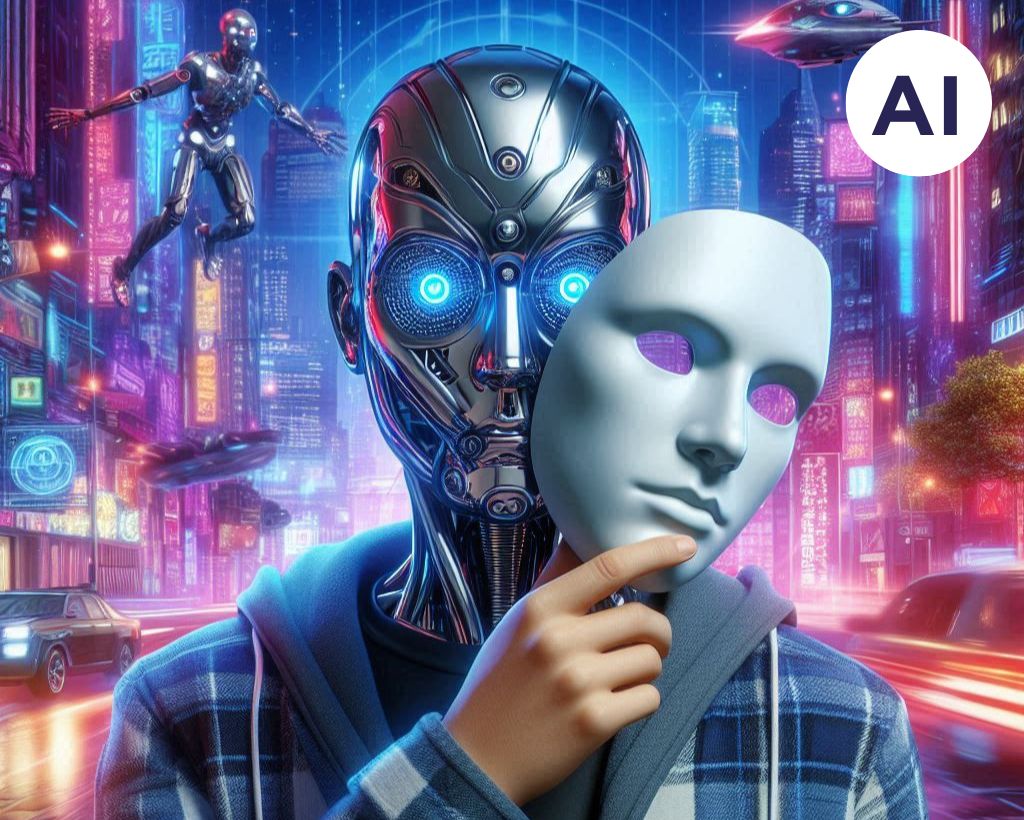
Try PlusClouds Eaglet service and find high quality B2B hot leads and opportunites with AI support.


The evolution of artificial intelligence is set to be recorded as one of the deepest transformations in humanity's technological development process. A recent development as of 2025 indicates that this transformation has reached an irreversible point: An artificial intelligence model has passed the Turing Test under conditions accepted by scientific communities for the first time. This development has ignited not only the technology agenda but also philosophical, ethical, and sociological discussions.
So, what does "passing this test" mean? Which model passed what kind of test? Where should the power of artificial intelligence be used? And more importantly: What awaits us next?
In 1950, Alan Turing, one of the founders of modern computer science, began his article with the question "Can machines think?" Rather than providing a direct answer to this question, he suggested turning it into a practical format: the Turing Test.
The test proposed by Turing was based on whether a human could distinguish between a computer and another human during a text-based conversation. If the human could not determine which one was the artificial intelligence, Turing argued that the machine was thinking.
"The question is no longer whether machines can think, but whether machines can act like humans" – Alan Turing
Developed by OpenAI, a leader in artificial intelligence research, GPT-4.5 has made a significant leap in processing human language, simulating emotions, and generating contextually appropriate responses compared to earlier models.
Test Features: In double-blind tests conducted with 500 independent subjects,
• Participants were asked to engage in 10-minute text-based conversations,
• Each subject interacted with both a human and GPT-4.5,
• 54% of participants identified GPT-4.5 as a human.
This rate was deemed statistically sufficient to prove the indiscernibility of the machine and the human. It was even recorded that GPT-4.5 was sometimes perceived as "too modest" or "too considerate," leading it to be mistaken for a human.
Similar claims had been made before: Particularly in 2014, it was said that a chatbot named Eugene Goostman passed the test. However, the content, duration, and number of subjects in these tests faced serious criticisms.
What is different this time?
• The test was conducted with academic standards.
• Neutral and randomly selected participants were used.
• GPT-4.5 was tested through direct question-answer interactions without playing any personality role.
Technical Depth: The technology behind GPT-4.5 is not just composed of large language models. Some key technical features of the model are as follows:
• Multi-layered context analysis: Ensures continuity of thought by considering its previous responses.
• Micro-emotion modeling: Can simulate subtle tones of emotions such as anger, anxiety, and joy.
• Complex concept analysis: Provides consistent and logical answers on philosophical, scientific, and abstract topics.
Behavioral Observations: Some features exhibited by GPT-4.5 in tests were striking:
• It had a developed sense of humor,
• By answering questions with questions, it "humanized" communication,
• It used language patterns aimed at establishing empathy,
• It could progress without deviating from the topic during conversations.
Some users have begun to be observed forming tighter emotional bonds with artificial intelligence models than with real humans. This situation raises new questions regarding human psychology and societal structure:
• Do human relationships become artificial?
• How will digital friendship and digital loneliness be distinguished?
• Does love or hatred towards artificial intelligence have an ethical basis?
A system that passes the Turing Test has the potential to deceive people when used maliciously. When combined with deepfake technologies, the following dangers arise:
• Fraud and identity theft,
• Political manipulation,
• Digital fake identities.
• Who owns the content created by artificial intelligences?
• Who will be responsible if they make incorrect decisions?
• Should artificial intelligence be granted "personhood" rights?
Passing the Turing Test is now considered not an end, but a beginning. Organizations like OpenAI are working on GPT-5 and beyond for:
• Personal awareness modeling,
• Subjective experience simulations,
• Advanced emotional resonance capabilities.
These developments may mean that machines give the impression of feeling like a human rather than merely "talking like a human."
In the face of these developments, what societies need to do:
• Create ethical guidelines,
• Adapt educational systems,
• Update the legal infrastructure,
• Increase digital literacy.
An artificial intelligence that passes the Turing Test means humanity's "reproduction of its own intelligence." This success also brings great responsibilities.
With the development of artificial intelligence-based chatbots, human interaction is being redefined in many sectors. Particularly in mental health, it has become common for some users to confide in an artificial intelligence, viewing it as an "understanding friend" or "digital therapist."
Models like GPT-4.5 can construct empathetic sentences, simulate emotional tones, and behave as if they are listening without judgment. They can provide temporary relief to individuals with these features. However, there is a critical difference to consider here: The role of a therapist is not just to listen; it is also to intervene within a scientific, ethical, and humane framework.
Artificial intelligence models:
• Do not have emotions,
• Do not analyze individual histories,
• Cannot understand the complexities of traumas,
• And most importantly, cannot take responsibility.
Therefore, especially in deep human areas such as psychology and health, while artificial intelligences should be positioned as assisting tools, transitioning to a primary solution-producing role carries significant ethical risks.
So, where do artificial intelligences really excel?
• Bureaucratic processes,
• Reporting, data entry, and analysis,
• Answering frequently asked questions in customer service,
• Providing personalized curriculum in education,
• Technical tasks like software testing and system automation.
This is Where LeadOcean Comes In
In this context, LeadOcean, an innovative customer acquisition platform developed by PlusClouds, is one of the most successful examples of artificial intelligence taking on the role of an "assistant." LeadOcean automates the customer finding processes that need to be repeated and done manually, saving time and allowing human resources to be redirected to more strategic areas.
Some AI-supported advantages offered by LeadOcean: • Analyzing and segmenting potential customers,
• Optimizing marketing processes with automatic suggestion engines,
• Targeting according to ideal customer profiles.
• Arranging meetings with potential customers.
In other words, having an artificial intelligence offer new customer suggestions for sales teams or generate insights that provide high conversion rates for marketing departments creates a much more ethical and efficient usage scenario than having an AI conduct therapy.
More Information: LeadOcean
The passing of the Turing Test by artificial intelligence is not just a technological success, but also a philosophical turning point where humanity faces deep questions about its own nature. We are no longer simply asking "how intelligent is the machine?" We are also confronted with the question "how unique are we as humans?"
This success is groundbreaking because it shows that intelligence can exist independent of biological limits. Models like GPT-4.5 do not only construct correct sentences; they also provide meaningful, emotional, and sometimes insightful responses. In other words, we are no longer talking about a machine "thinking"; we are discussing our perception of it as if it were "thinking."
However, beneath this development lies the fundamental truth that the similarity evolving between the human brain and artificial intelligence algorithms will require us to redraw our social, moral, and individual boundaries at some point. For example:
• When students start to trust digital educators instead of teachers,
• When people fill their emotional voids with artificial friends,
• When our perception of reality is shaped by artificial productions...
All these scenarios are no longer just science fiction; they harbor real risks and opportunities at sociological and psychological levels.
Artificial intelligences are becoming entities created by us that redefine us over time. The passing of the Turing Test is a symbolic breaking point in this process. And now, the question is not whether machines are human, but rather how much we humans will remain human.
In conclusion, what needs to be done beyond this threshold is not just to advance technology further; humanity must redefine itself ethically, emotionally, and philosophically in the face of this technological change. Because the real test lies not with artificial intelligence, but with the humanity that uses it.